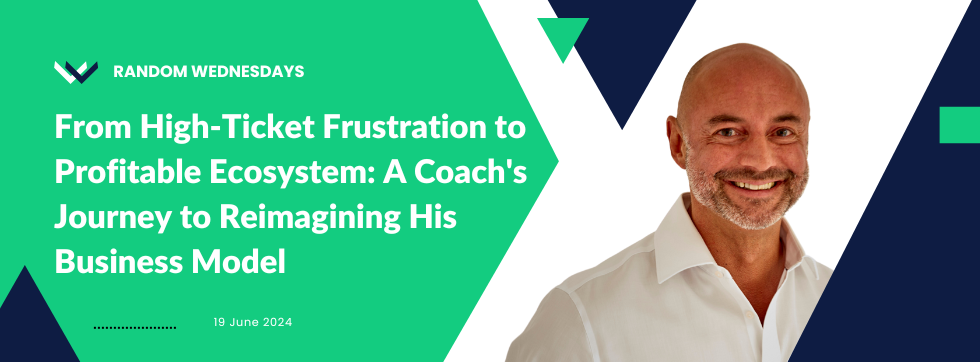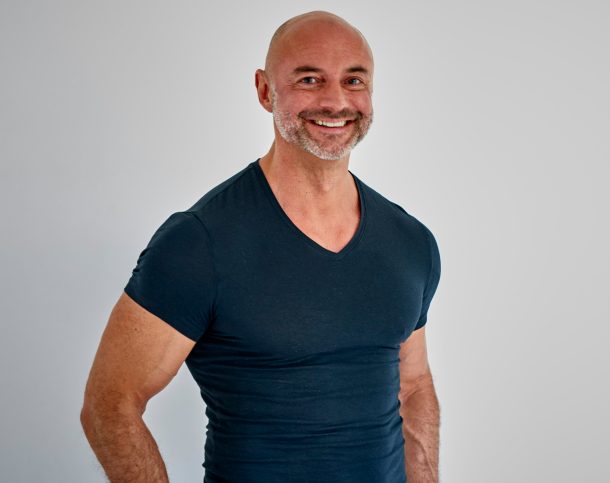Discover how one coach is overcoming the challenge of consistently converting high-priced packages into clients by creating a strategic ecosystem of offerings.
Converting interest into high ticket clients is a science, not just an art.
You’ve poured your heart and soul into designing an inspirational 1:1 coaching program but signing high-ticket clients remains an elusive goal.
Few things are more frustrating than hearing ‘crickets’ despite your best efforts.
This is the exact situation facing Evolving Coach Academy Member, MC.
In today’s post, we’ll explore two key questions he’s been struggling with:
1. What is the ideal mix of offerings and pricing structure that will enable me to generate consistent revenue and successfully sell my premium coaching package?
2. As my role evolves from being a coach to also being a speaker and teacher, how can I effectively leverage these different roles to maximise my impact, reach a wider audience, and maintain my high-ticket price point?
By reviewing his challenge my aim is to provide you with a framework to build your own thriving ecosystems.
Let’s get started.
Reimagining the business model
MC’s lightbulb moment was realising that to consistently market and sell his premium offering, he needed to completely reimagine his business model.
The status quo of offering only a high-priced, intensive 1:1 coaching package was simply not sustainable or scalable.
Fresh thinking:
- Build an offerings ecosystem to serve more people
- Create stepping stones towards a high-ticket package over time.
- Map out a clear client journey with ascending levels of commitment and investment.
- Create a waiting list to validate demand before creating new offers.
Create a bridge to serve more
When we sat down to talk, my key insight was he’s missing a bridge of nurturing experiences that would ultimately lead people to working with him 1:1.
Currently, the only way to work with MC is through a 6-month individual coaching program that requires a significant investment.
For many interested potential clients, this is simply too big of a leap to make right away.
Here’s an alternative pathway.
- Produce high quality content
- Create a valuable lead magnet
- Devise a compelling entry level offer
- Validate demand before building offers
- Leverage speaking and teaching roles with a CTA
1. Produce high-quality, relevant content
The good news is MC consistently creates content that showcases his unique perspective and aligns with his target audience’s top challenges.
By providing this type of genuine value, MC attracts his audience and starts building trust and credibility with them.
The ultimate goal is to create content that resonates so strongly that people naturally want to reach out and connect with him.
2. Create a valuable lead magnet
Once MC has a warm, engaging audience, the next step is to offer them something of even greater value in exchange for their contact information.
This is where a lead magnet comes in.
In his case, this might be an interactive assessment, quiz, or workbook, such as:
- Peak Performance Through Inner Peace Quiz
- Happiness and Success Assessment.
By providing a personalised result or set of recommendations, these custom assets perfectly position MC’s paid offerings as the natural next step for those who want to go deeper.
3. Offer an entry-level program
With a growing list of engaged leads, MC can then introduce an entry-level offering that appeals to a wider group audience.
The aim is to provide a taste of his premium coaching at a more accessible price point.
This could be a lower-cost workshop, course, or group coaching experience.
Some ideas to consider include a:
- 7-Day Authentic Mindset Challenge
- Be-Hear-Now Habits Workshop Accelerator.
The goal of these programs is to deliver quick wins, introduce participants to his unique methodology, and leave them eager to work with him further.
Validating demand before launching
One of the deadliest traps coaches can fall into is investing significant time and resources into building a program before validating demand and willingness to pay for it.
As Noah Kagan bluntly puts it, “It’s deadly to build a business without first verifying there are paying customers!”
The most successful coaches know this, which is why they “sell” their program concepts first before creating them.
One highly effective way to test demand is by setting up a waiting list for your offering.
To maximise the success of a waiting list:
- Create a campaign that asks questions and collects key audience data
- Nurture the waiting list by sharing relevant content, tools, resources, and insights.
- Build excitement with service updates and sneak peeks of your upcoming offer.
- Prepare your audience for your launch with a clear campaign that builds anticipation.
- Open the doors to your program and convert excitement into paying clients.
While you don’t need millions on your waiting list like Elon Musk’s Cybertruck, aiming for at least 10-20 highly engaged and qualified leads is a good starting point before launching.
Leveraging speaking & teaching roles
As MC’s role expands from coach to include speaker and teacher, he has a powerful opportunity to strategically use these platforms to guide people into his offering ecosystem.
When it comes to speaking engagements, creating a compelling keynote includes:
- A strong hook that grabs attention and sets the tone
- 3 key teachings or insights that provide standalone value
- Illustrative client success stories that build credibility
- A clear call-to-action that leads into his ecosystem, such as a free assessment or entry-level program
Similarly, when teaching workshops or courses, MC is designing them as interactive experiences that deliver tangible results while seeding his premium offering.
By theming and seeding all his audience touchpoints, MC aims to create powerful breakthroughs that participants can’t help but crave more.
Putting it into practice
If you’re ready to start building your own thriving ecosystem as a coach, here’s a step-by-step plan to get started:
- Map out your customer journey
- Brainstorm offerings that align with your ideal audience’s needs.
- Consider a mix of free content, lead magnets, entry-level programs (up to $1k), and high-ticket packages ($10k+)
- Re-structure your content, include clear calls-to-action and guide people towards your ecosystem.
- Invest in systems and technology to integrate your various offerings and touchpoints.
- Create a wait list, continuously gather data and feedback to optimise your ecosystem
- Use feedback, engagement metrics, and other sources of insights to refine your offerings and marketing.
Conclusion
Building a thriving ecosystem is not an overnight endeavour.
It takes consistent effort, experimentation, and a willingness to learn and adapt.
But if like MC, you’re committed to serving more people through multiple integrated offerings, you can create a transformative and profitable coaching business that fills your high-ticket packages with ease.
So, what’s one action you can take today to start reimagining your own coaching business model?
Inside the Evolving Coach Academy, we explore topics like these with live examples and dynamic facilitation.
>>> Email: EVOLVE to apply for a Connect Call with the team. <<<


